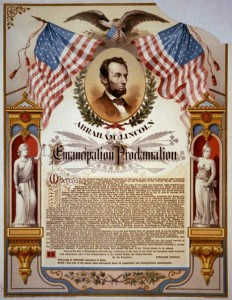Law and Law School in Six Words
One of the things we try to teach our law students is how to write concisely. And nothing is more concise than a story in six words. If you aren’t familiar with six-word stories, let me briefly (in six words) explain. Ernest Hemingway wrote one; won bet. Okay, more fully, it’s said that in the 1920s, Hemingway’s colleagues bet him he couldn’t write a story in six words. He wrote: For sale: baby shoes, never used. Some say that Hemingway considered it his best work. (But see here for evidence that Hemingway never wrote those six words.)
Writing a six-word story is creative and fun—and great practice at being concise. Here are several six-word stories about law school or other law-related themes, contributed by faculty and students. My goal is to continue to collect such stories and post them as they come in. Please consider writing your own six-word story and posting it as a comment. Or email it to me at lisa.mazzie@marquette.edu.
Answer: “It depends”
worked
most days
Professor Rebecca Blemberg
Old dog, new liberalism; Antonin Scalia.
Gil Simpson, 2L
I loved fearlessly, despite the law.
Professor Ed Fallone
Fourteenth circuit moot court is real.
Brittany Kachingwe, 3L
Cost-benefit analysis rules the case.
Professor Melissa Greipp
Personal jurisdiction in six words? Ha!
Professor Irene Ten Cate
UPDATE (9/21/13): The six-word stories keep rolling in. Here are some more. Please keep them coming!
Don’t outsource, let our lawyers work.
Angelina Joseph
“Habeas Corpus,” the third-year student cried.
Professor David Austin, California Western School of Law
Hanging shingles, he fell into debt.
Professor David Austin, California Western School of Law
Legal writer, for sale, bores family.
Submitted by the children of Professor Ruth Anne Robbins, Rutgers School of Law – Camden
Friday night, legal writing: the usual.
Submitted by the children of Professor Ruth Anne Robbins, Rutgers School of Law – Camden
I worked hard. It paid off.
Professor Candace Centeno, Villanova
Perseverance in law: Constance, Thurgood, and Desegregation.
Professor Bernadette Gargano, SUNY Buffalo Law School
No better preparation for serving humanity.
Professor Kirsten K. Davis, Stetson University College of Law
“Heads full of mush” learn clarity.
Professor Sue Liemer, School of Law, Southern Illinois University
Students never saw Paper Chase, alas.
Professor Bruce Ching, Michigan State University College of Law
Ruth Anne Robbins submits the following, written by her 2L and 3L students:
1L: scared; 2L: burnt; 3L: done.
2L. One month deep, doggy-paddling. Quicksand?
Sanity sustained by pounds of coffee.
Work Harder Than Ever, No Guarantees.
1L, 2L, 3L, Bar Exam, Floor.
Should have read the “Slacker’s Guide.”

